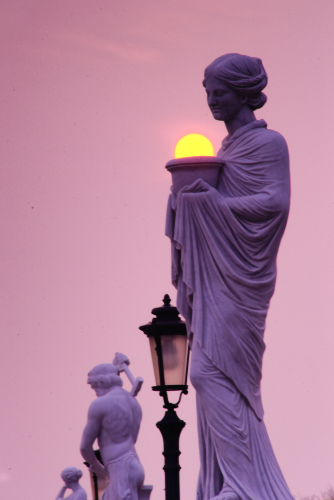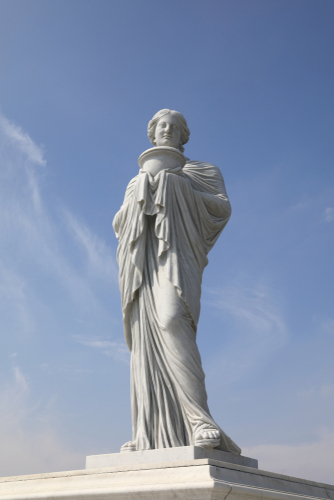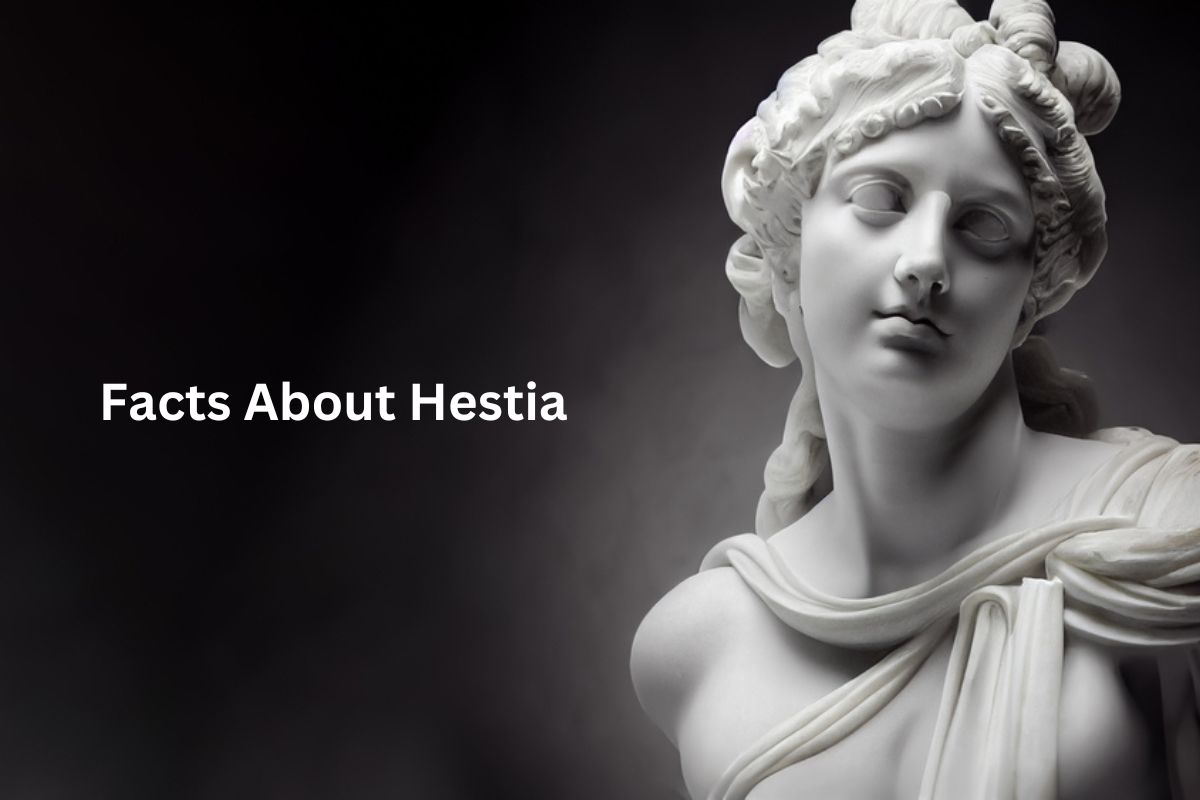Hestia, an ancient Greek goddess, holds a significant place in mythology as the guardian of the hearth and home. She was one of the twelve Olympian gods and goddesses and was known for her serene nature.
As the eldest daughter of Cronus and Rhea, Hestia maintained the sacred fire in every home and temple, symbolizing warmth, protection, and unity. Her commitment to her sacred duties led her to remain unmarried, embodying the virtues of purity and devotion.
Hestia’s Roman equivalent is Vesta, and her influence extended beyond individual households to symbolize unity and well-being in communities. Through the ritual offerings made to her at mealtime, she was revered as the provider and protector of the family’s nourishment.
Hestia’s presence brought harmony and stability, making her an essential deity in the Greek pantheon.
Hestia Facts
1. Hestia is an ancient Greek goddess
Hestia was an important deity in ancient Greek mythology. She was highly revered and respected as the goddess of the hearth and home.
Also Read: Facts About Hephaestus
The Greeks held her in high regard, recognizing the significance of the hearth as the center of domestic life and communal gatherings.

2. She is associated with the hearth and home
Hestia’s primary domain was the hearth, which was not only a physical fireplace but also represented the concept of home and family. The hearth fire was the heart of the household, providing warmth, light, and a place for cooking.
Also Read: Pegasus Facts
Hestia’s role was to safeguard the hearth and ensure its perpetual flame, which symbolized the stability, security, and unity of the family.
3. Hestia was one of the twelve Olympian gods and goddesses
In Greek mythology, the Olympians were the principal gods and goddesses who ruled over Mount Olympus, the highest peak in Greece.
Hestia was among the twelve Olympians, a prestigious group that included:
- Zeus
- Hera
- Poseidon
- Demeter
- Ares
- Athena
- Apollo
- Artemis
- Hermes
- Aphrodite
- Hephaestus
As one of the Olympians, Hestia held a significant position in the divine hierarchy and was accorded great reverence by both mortals and fellow gods.
4. She was the eldest daughter of Cronus and Rhea
Hestia was born to the Titans Cronus and Rhea, who were prominent figures in Greek mythology. She was the firstborn of their children, preceding her siblings Zeus, Poseidon, Hades, Hera, and Demeter.
Despite being one of the Titans, Hestia joined the ranks of the Olympians when they overthrew the Titans and established their reign on Mount Olympus.
5. Hestia maintained the sacred fire in every home and temple
As the goddess of the hearth, Hestia was responsible for tending to the sacred fire in every household and temple. The hearth fire was essential for warmth, cooking, and providing a gathering place for the family.
Hestia’s duty was to ensure that the fire never extinguished, as it represented the vitality and continuity of the home. She was also revered in temples, where her sacred fire symbolized the divine presence and was kept burning as a sign of devotion.

6. She was known for her calm and gentle nature
Hestia was often depicted as a serene and mild-mannered goddess. She embodied qualities such as modesty, tranquility, and peacefulness. Hestia’s nature reflected the domestic ideals of ancient Greece, emphasizing the importance of harmony, stability, and hospitality within the home.
Her calm presence brought a sense of comfort and security, and she was revered as a benevolent and nurturing figure. Hestia’s tranquil disposition made her well-suited for her role as the guardian of the hearth and the preserver of familial and communal bonds.
7. Hestia was a virgin goddess and remained unmarried
Hestia chose to remain a virgin goddess, dedicating herself entirely to her sacred duties. She rejected the advances and proposals of both gods and mortals, focusing solely on her role as the guardian of the hearth.
Her virginity symbolized her purity and commitment to her divine responsibilities. By abstaining from romantic and marital relationships, Hestia embodied the ideals of chastity, devotion, and independence.
8. Her Roman equivalent is Vesta
In Roman mythology, Hestia’s counterpart is Vesta. Vesta was the goddess of the hearth and home, and her worship in Rome mirrored that of Hestia in ancient Greece.
The Roman Vestal Virgins were priestesses devoted to Vesta, tasked with maintaining the sacred fire in her temple, known as the Vestal Hearth. The cult of Vesta played a significant role in Roman religious practices and was regarded with great reverence and importance.
9. Hestia was honored with offerings at the beginning and end of meals
In ancient Greek culture, it was customary to offer a portion of the meal to Hestia before partaking in it. This practice was seen as a way of expressing gratitude and seeking the goddess’s blessing for the meal.
The first and last portions of food and drink were dedicated to Hestia, emphasizing her role as the provider and protector of the household’s nourishment.
This ritual highlighted the importance of Hestia’s presence in everyday life and the belief that she played a vital role in sustaining the family unit.
10. She symbolized unity and well-being in communities
Hestia’s significance extended beyond individual households. As the goddess of the hearth, she symbolized the hearth’s central role in community life. The communal hearth served as a gathering place for sharing meals, exchanging stories, and fostering a sense of unity among the members of a community.
Hestia’s presence and protection of the communal hearth represented the well-being, harmony, and cooperation of the entire community. Her blessings were sought for important communal endeavors, such as marriages, births, and journeys, as her influence was believed to bring prosperity and good fortune to the community as a whole.
